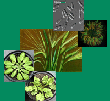| Uraguchi, S; Ohshiro, Y; Otsuka, Y; Wada, E; Naruse, F; Sugaya, K; Nagai, K; Wongkaew, A; Nakamura, R; Takanezawa, Y; Clemens, S; Ohkama-Ohtsu, N; Kiyono, M: Phytochelatin-mediated metal detoxification pathway is crucial for an organomercurial phenylmercury tolerance in Arabidopsis., Plant Molecular Biology, Springer (2021), doi:10.1007/s11103-021-01221-0 | |
| Abstract: Small thiol-rich peptides phytochelatins (PCs) and their synthases (PCSs) are crucial for plants to mitigate the stress derived from various metal(loid) ions in their inorganic form including inorganic mercury [Hg(II)]. However, the possible roles of the PC/PCS system in organic mercury detoxification in plants remain elusive. We found that an organomercury phenylmercury (PheHg) induced PC synthesis in Arabidopsis thaliana plants as Hg(II), whereas methylmercury did not. The analyses of AtPCS1 mutant plants and in vitro assays using the AtPCS1-recombinant protein demonstrated that AtPCS1, the major PCS in A. thaliana, was responsible for the PheHg-responsive PC synthesis. AtPCS1 mutants cad1-3 and cad1-6, and the double mutant of PC-metal(loid) complex transporters AtABCC1 and AtABCC2 showed enhanced sensitivity to PheHg as well as to Hg(II). The hypersensitivity of cad1-3 to PheHg stress was complemented by the own-promoter-driven expression of AtPCS1-GFP. The confocal microscopy of the complementation lines showed that the AtPCS1-GFP was preferentially expressed in epidermal cells of the mature and elongation zones, and the outer-most layer of the lateral root cap cells in the meristematic zone. Moreover, in vitro PC-metal binding assay demonstrated that binding affinity between PC and PheHg was comparable to Hg(II). However, plant ionomic profiles, as well as root morphology under PheHg and Hg(II) stress, were divergent. These results suggest that PheHg phytotoxicity is different from Hg(II), but AtPCS1-mediated PC synthesis, complex formation, and vacuolar sequestration by AtABCC1 and AtABCC2 are similarly functional for both PheHg and Hg(II) detoxification in root surficial cell types. |

